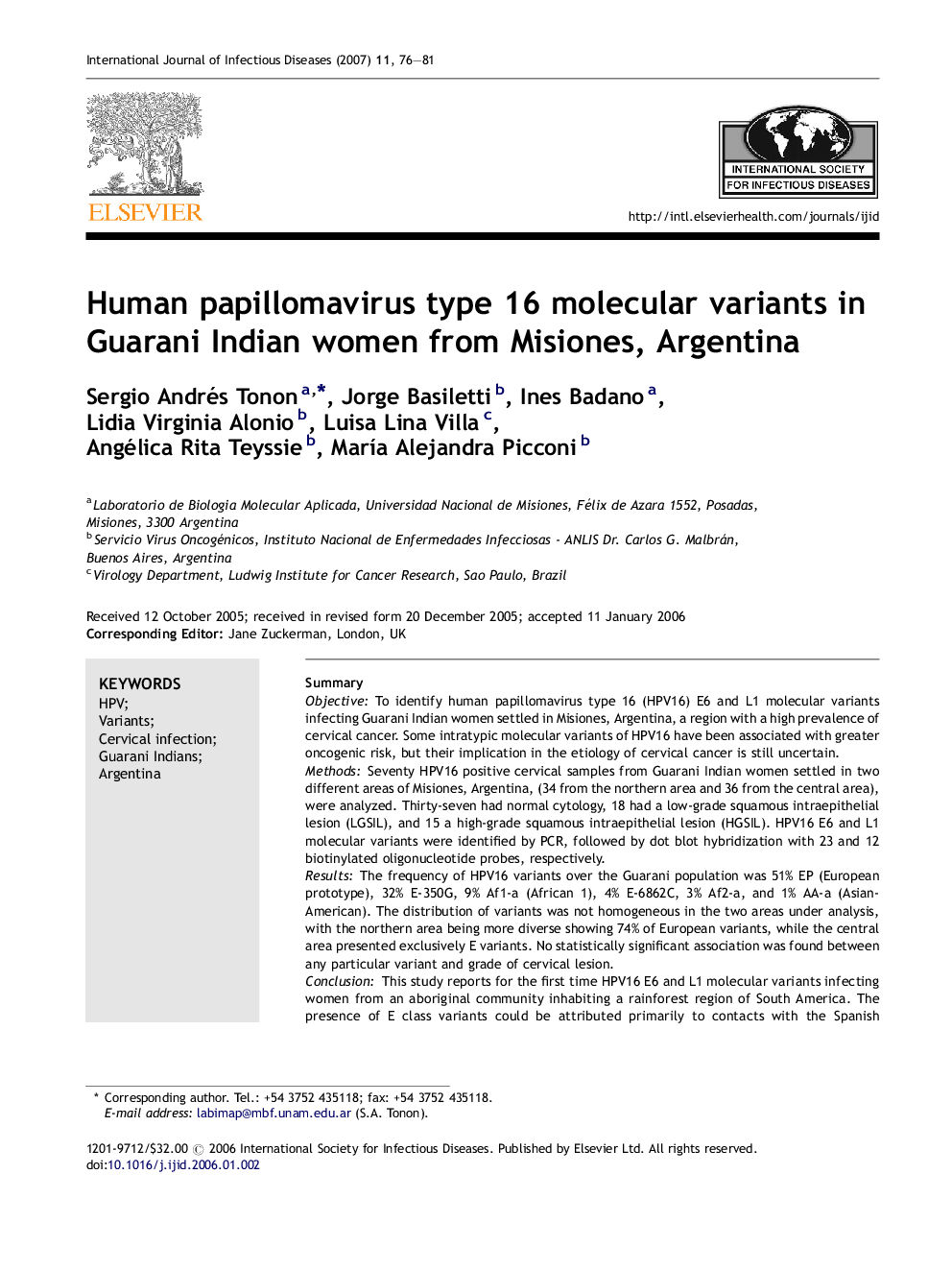| کد مقاله | کد نشریه | سال انتشار | مقاله انگلیسی | نسخه تمام متن |
|---|---|---|---|---|
| 3365191 | 1592155 | 2007 | 6 صفحه PDF | دانلود رایگان |

SummaryObjectiveTo identify human papillomavirus type 16 (HPV16) E6 and L1 molecular variants infecting Guarani Indian women settled in Misiones, Argentina, a region with a high prevalence of cervical cancer. Some intratypic molecular variants of HPV16 have been associated with greater oncogenic risk, but their implication in the etiology of cervical cancer is still uncertain.MethodsSeventy HPV16 positive cervical samples from Guarani Indian women settled in two different areas of Misiones, Argentina, (34 from the northern area and 36 from the central area), were analyzed. Thirty-seven had normal cytology, 18 had a low-grade squamous intraepithelial lesion (LGSIL), and 15 a high-grade squamous intraepithelial lesion (HGSIL). HPV16 E6 and L1 molecular variants were identified by PCR, followed by dot blot hybridization with 23 and 12 biotinylated oligonucleotide probes, respectively.ResultsThe frequency of HPV16 variants over the Guarani population was 51% EP (European prototype), 32% E-350G, 9% Af1-a (African 1), 4% E-6862C, 3% Af2-a, and 1% AA-a (Asian-American). The distribution of variants was not homogeneous in the two areas under analysis, with the northern area being more diverse showing 74% of European variants, while the central area presented exclusively E variants. No statistically significant association was found between any particular variant and grade of cervical lesion.ConclusionThis study reports for the first time HPV16 E6 and L1 molecular variants infecting women from an aboriginal community inhabiting a rainforest region of South America. The presence of E class variants could be attributed primarily to contacts with the Spanish conquerors, and Af variants from African slaves introduced later in the South American continent.
Journal: International Journal of Infectious Diseases - Volume 11, Issue 1, January 2007, Pages 76–81